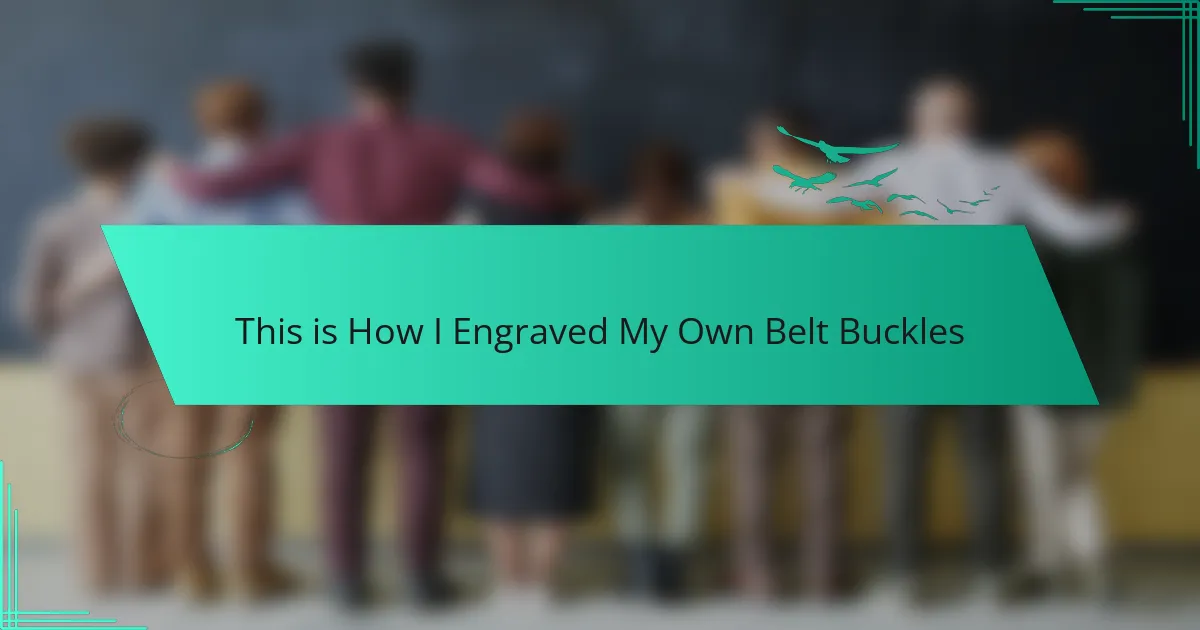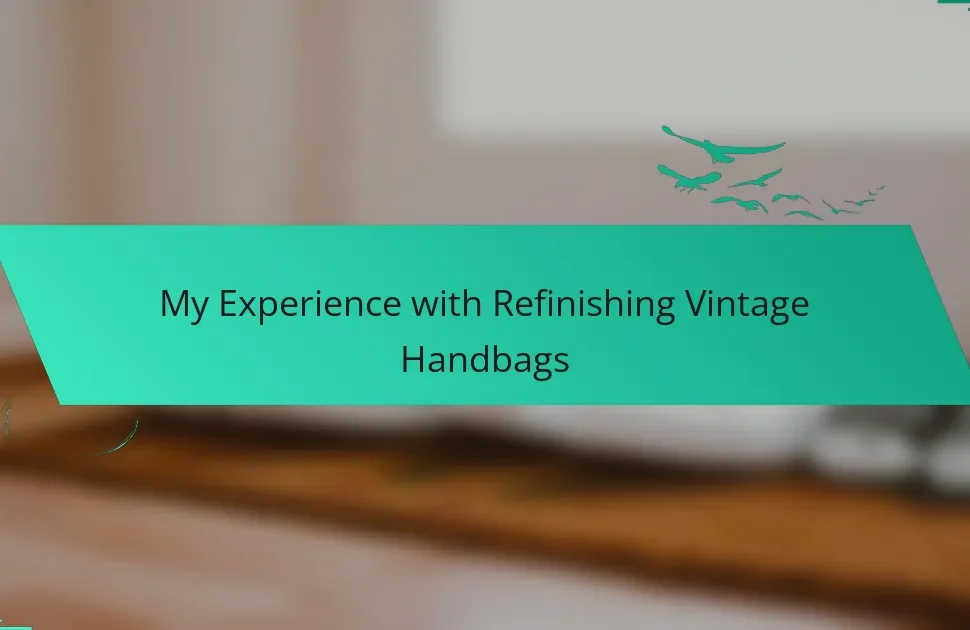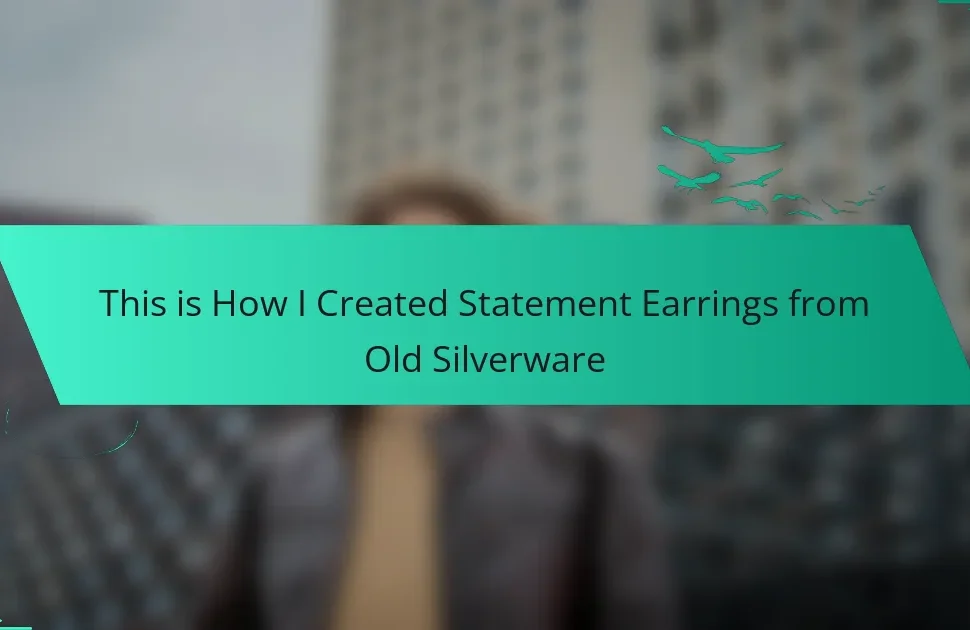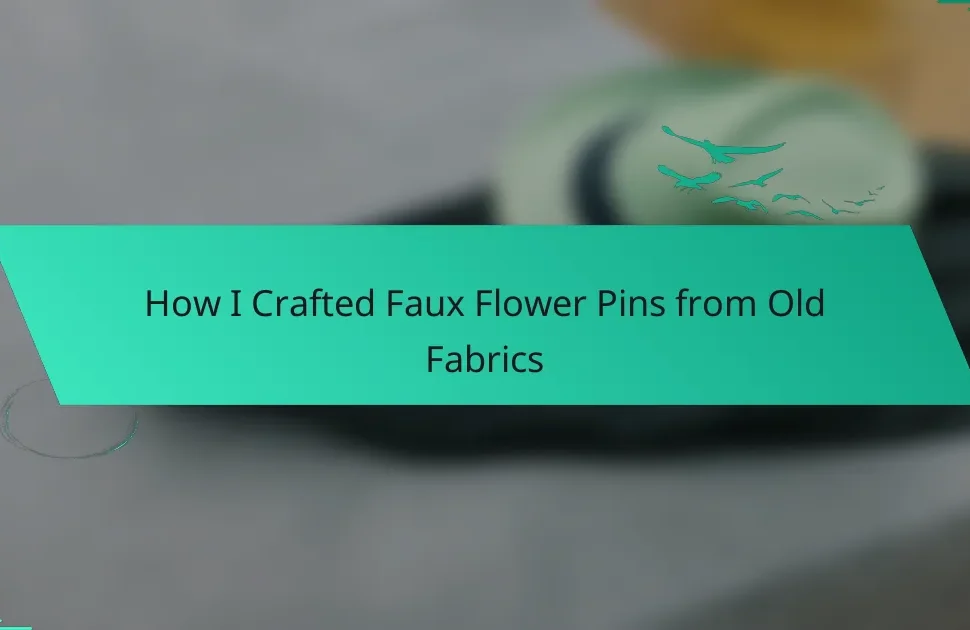Key takeaways
- DIY vintage fashion allows for personal expression and creativity through unique projects, such as engraving accessories.
- Essential tools for engraving include an engraving pen, steel ruler, and safety glasses to ensure safety and precision.
- Choosing the right belt buckle can elevate outfits; consider style, design, and personalization to reflect individuality.
- Integrating vintage style into modern wardrobes benefits from balancing color palettes and layering accessories for visual depth.
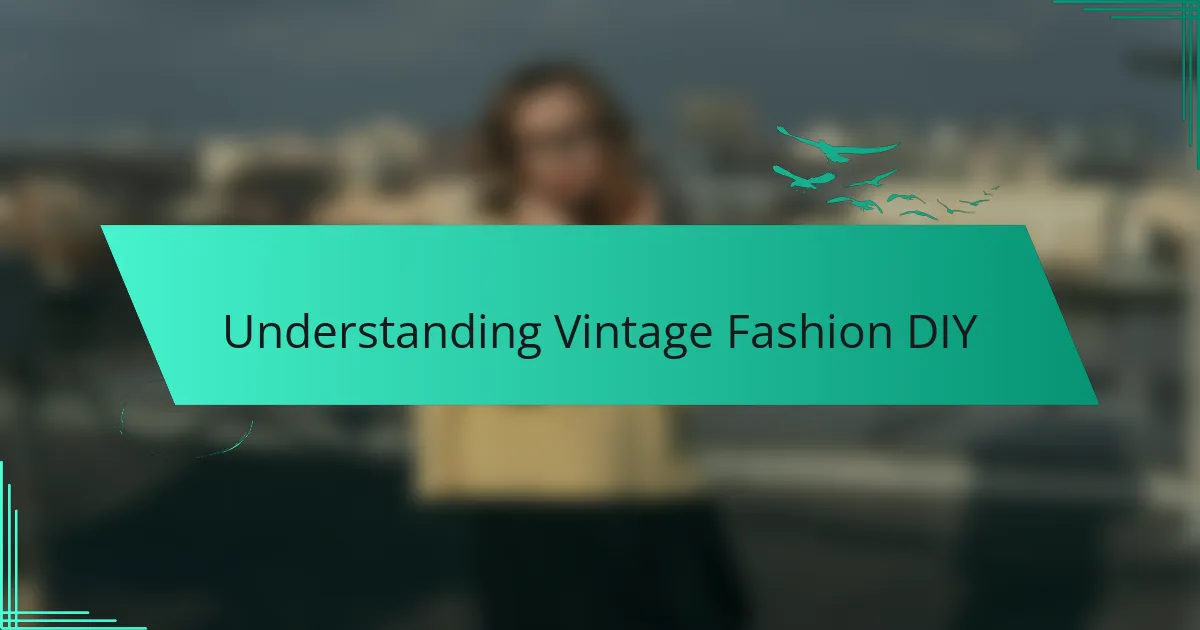
Understanding Vintage Fashion DIY
When I first delved into vintage fashion DIY, I discovered it was more than just a hobby; it was a way to express my individuality and creativity. I remember flipping through stacks of old magazines and feeling inspired by the unique styles of yesteryear. Each project I undertook, like engraving my own belt buckles, became a journey that transformed not only my wardrobe but also my outlook on fashion.
Creating something with my own hands feels incredibly rewarding. The thrill of taking an old piece and turning it into something uniquely mine ignites a deeper appreciation for the craftsmanship behind vintage fashion. Here are some essential points to keep in mind if you’re considering jumping into the DIY world:
- Embrace the imperfections; they often add to the character of your creation.
- Research vintage styles to find inspiration suited to your taste.
- Don’t be afraid to experiment; each project is a chance to grow your skills.
- Invest in quality tools; they can make a significant difference in your results.
- Share your creations with others, as feedback can spark new ideas and connections.
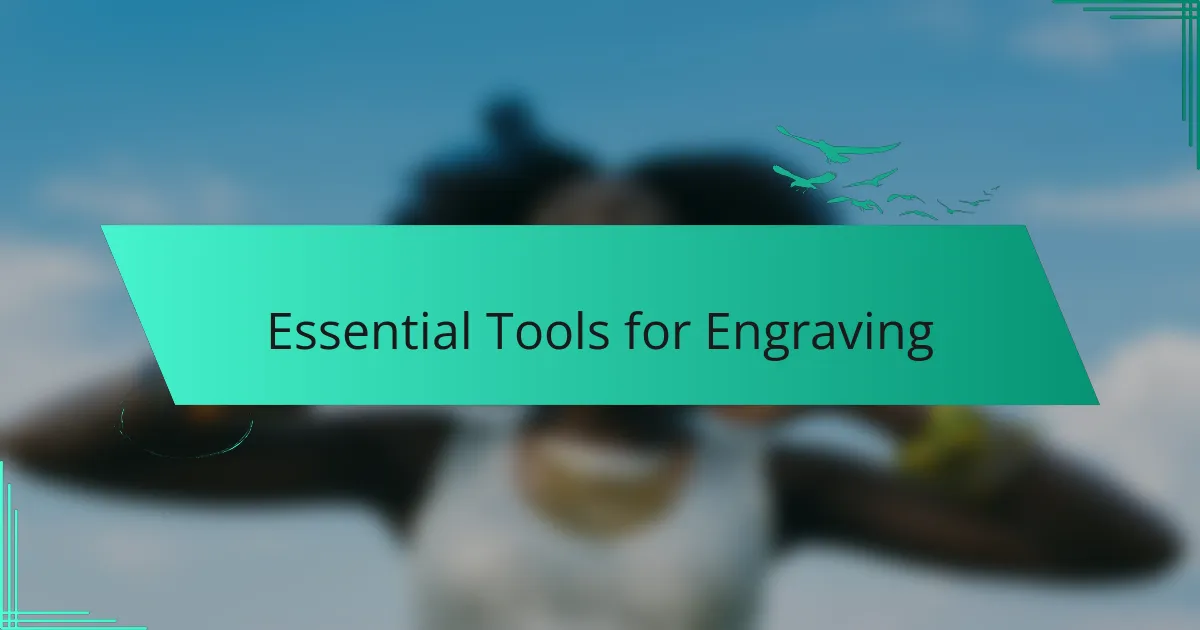
Essential Tools for Engraving
When I first started engraving my own belt buckles, I quickly learned that having the right tools makes all the difference. I remember feeling excited but a bit overwhelmed by the options available. After a bit of trial and error, I settled on a few essential tools that helped me create designs I was proud of.
Here’s a handy list of the tools I found indispensable for my engraving projects:
- Engraving Pen or Tool: This is your primary tool; it allows for precision in your designs.
- Steel Ruler: Great for measuring and drawing straight lines, ensuring symmetry in your work.
- Graphite Transfer Paper: Perfect for transferring your designs onto the metal surface with ease.
- Safety Glasses: Always protect your eyes; engraving can create fine particles that may fly around.
- Clamps or a Vise: These keep your belt buckle secure while you work, making the process much safer and more enjoyable.
Choosing these tools gave me confidence and made each engraving session feel like a step toward mastering my craft.
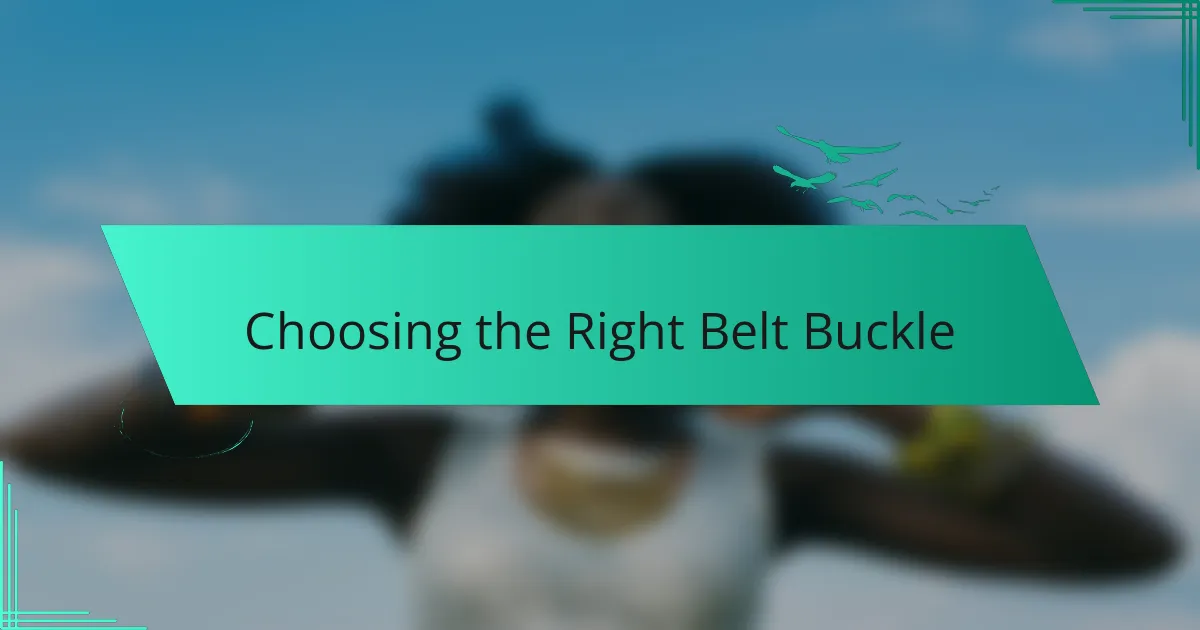
Choosing the Right Belt Buckle
Choosing the right belt buckle can be a delightful journey, especially when you consider how each design resonates with your style. Personally, I found that opting for a buckle that reflects my interests allowed me to express my personality without saying a word. From vintage designs to more modern styles, there’s a buckle out there that will be a conversation starter every time I wear it.
When I first started making my own belt buckles, I quickly realized how the shape and finish could drastically alter the look of an outfit. I remember feeling both excited and overwhelmed by the choices. I decided to go for a rustic, antique finish that added character to my denim and leather combination, instantly elevating my fashion game.
Here’s a simple comparison table to help you weigh your options:
| Type of Buckle | Style & Use |
|---|---|
| Classic Metal | Timeless, versatile for both casual and formal wear |
| Vintage Decorative | Great for making a statement, often with intricate designs |
| Custom Engraved | Unique and personal, perfect for showcasing individuality |
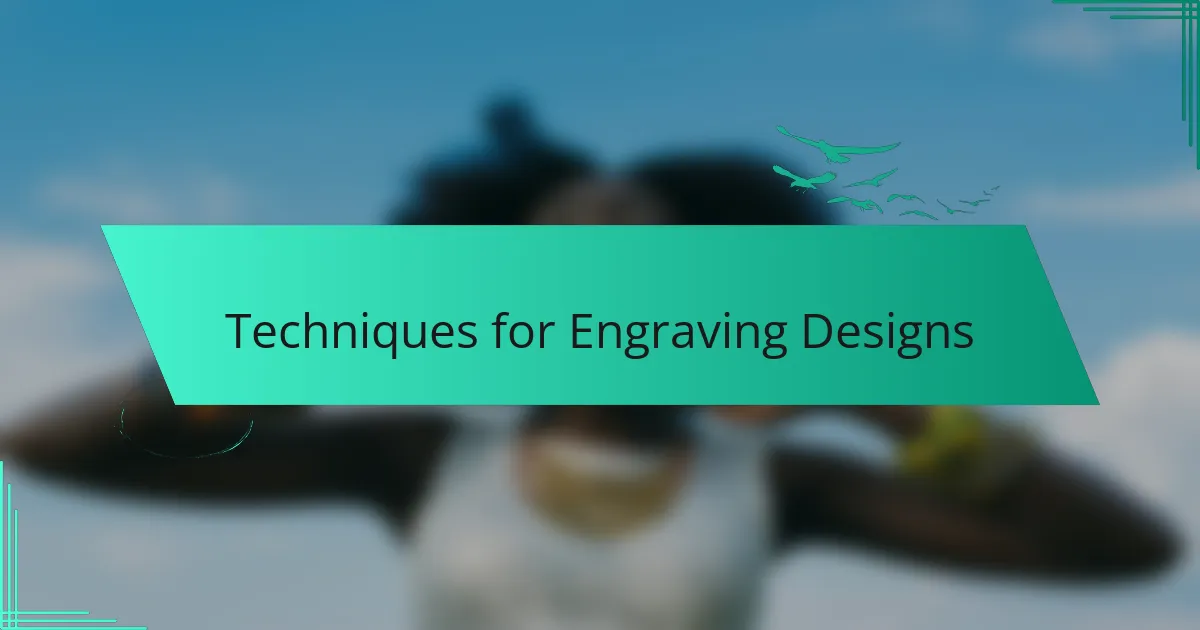
Techniques for Engraving Designs
When it comes to engraving designs on belt buckles, I’ve experimented with various techniques to find what works best for me. One of my favorites is using a Dremel tool, which offers flexibility and precision, especially for intricate designs. I remember the first time I attempted a floral pattern; it took patience, but seeing the end result was so rewarding.
Another method I’ve tried is chemical etching. This involves creating a stencil and using a chemical solution to eat away at the metal. It sounds intimidating at first, but it can yield stunning results with a little practice. Each technique has its charm and unique set of challenges, which is part of what makes this DIY journey so fulfilling.
Here’s a comparison of the two techniques I’ve found helpful:
| Technique | Pros and Cons |
|---|---|
| Dremel Tool | Pros: High precision; versatile for various designs. Cons: Can be noisy and requires steady hands. |
| Chemical Etching | Pros: Great for detailed designs; less manual labor involved. Cons: Requires safety precautions and can be tricky to master. |
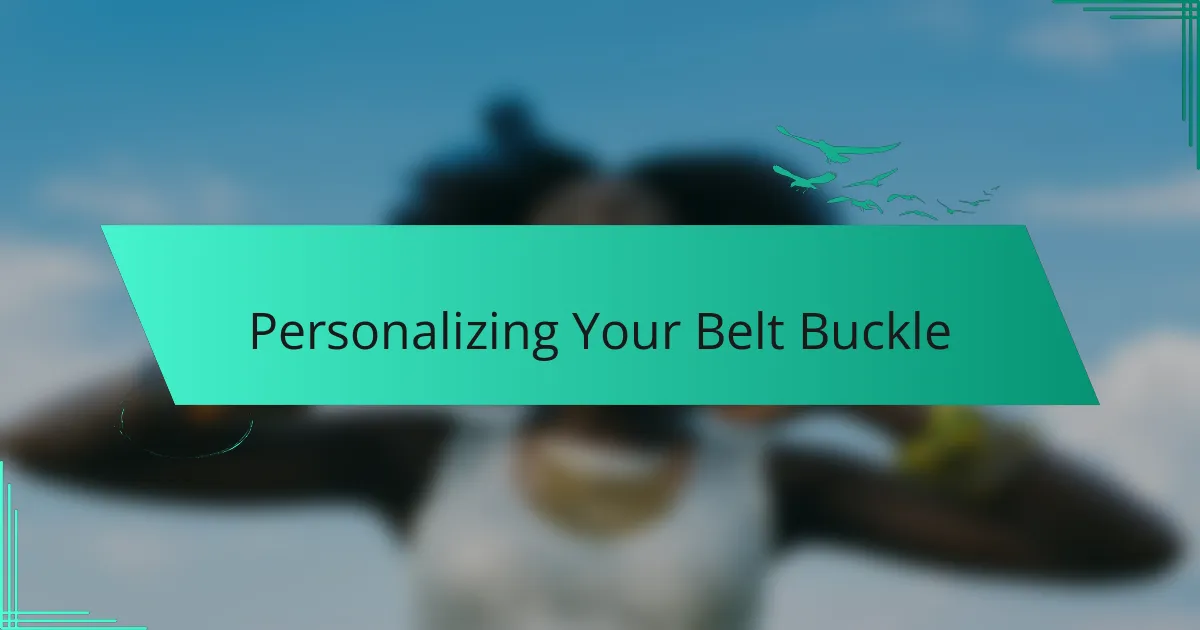
Personalizing Your Belt Buckle
Personalizing a belt buckle is a fantastic way to express your individuality. I’ve always enjoyed giving my accessories a unique touch, and engraving my belt buckle not only made it special but also filled me with a sense of pride. Each time I wear it, I’m reminded of my creative journey and the memories attached to it.
When considering personalization, think about what resonates with you. Here are some ideas you can use to inspire your own unique design:
- Your initials or name
- A favorite quote or mantra
- A meaningful date (like a birthday or anniversary)
- A symbol that represents what you love (like a heart or star)
- A simple geometric pattern for a modern touch
Engraving isn’t just about aesthetics; it’s a way to tell your story. Every time I glance at my buckle, I remember the moments that inspired its design.
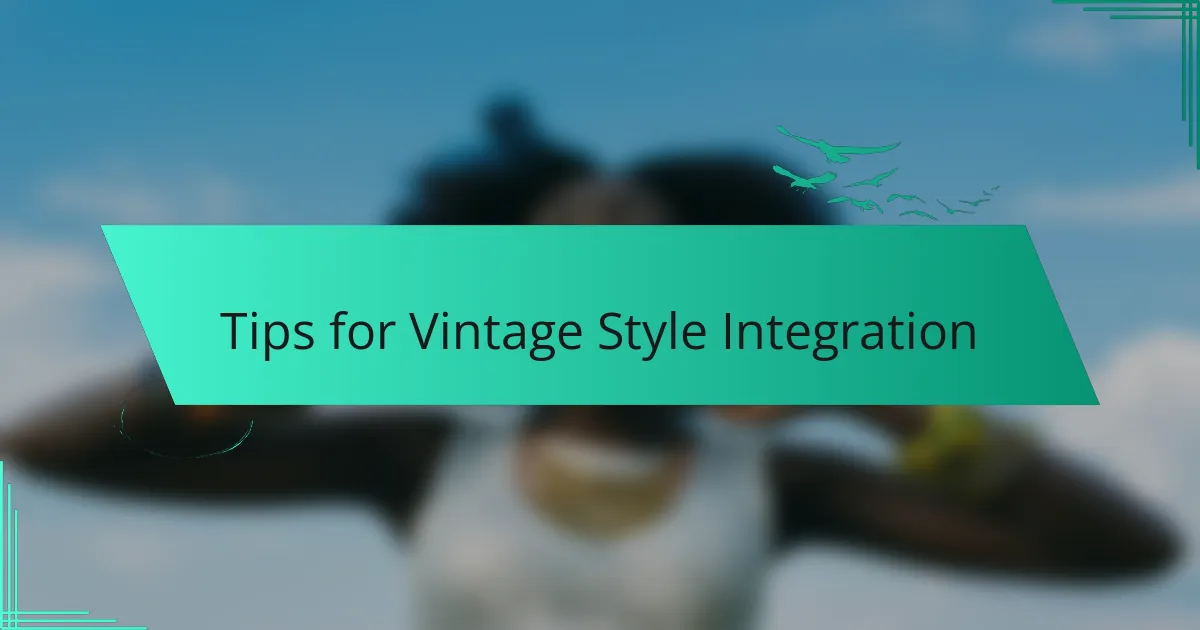
Tips for Vintage Style Integration
There’s a certain magic to integrating vintage style into your everyday wardrobe, and I’ve found that balance is key. For instance, I love mixing modern pieces with my engraved belt buckles. It creates a beautiful contrast that draws attention and starts conversations. Have you ever tried pairing a vintage belt buckle with a contemporary outfit? The result can be striking.
Another tip I swear by is to focus on color palettes. Vintage styles often feature earthy tones or pastels that can be surprisingly versatile. I remember the first time I wore a dusty rose blouse with my antique silver buckle; the soft hues complemented each other perfectly. Utilizing color in this way allows you to stay true to vintage aesthetics while keeping your look fresh and modern.
Lastly, don’t underestimate the power of layering accessories. Combining different vintage items can give your outfit depth and tell a story. I often wear my engraved belt buckle with layered necklaces that incorporate both vintage and modern styles. This mix not only showcases my personal history but also keeps my look dynamic. What’s your go-to method for integrating vintage pieces into your wardrobe?
